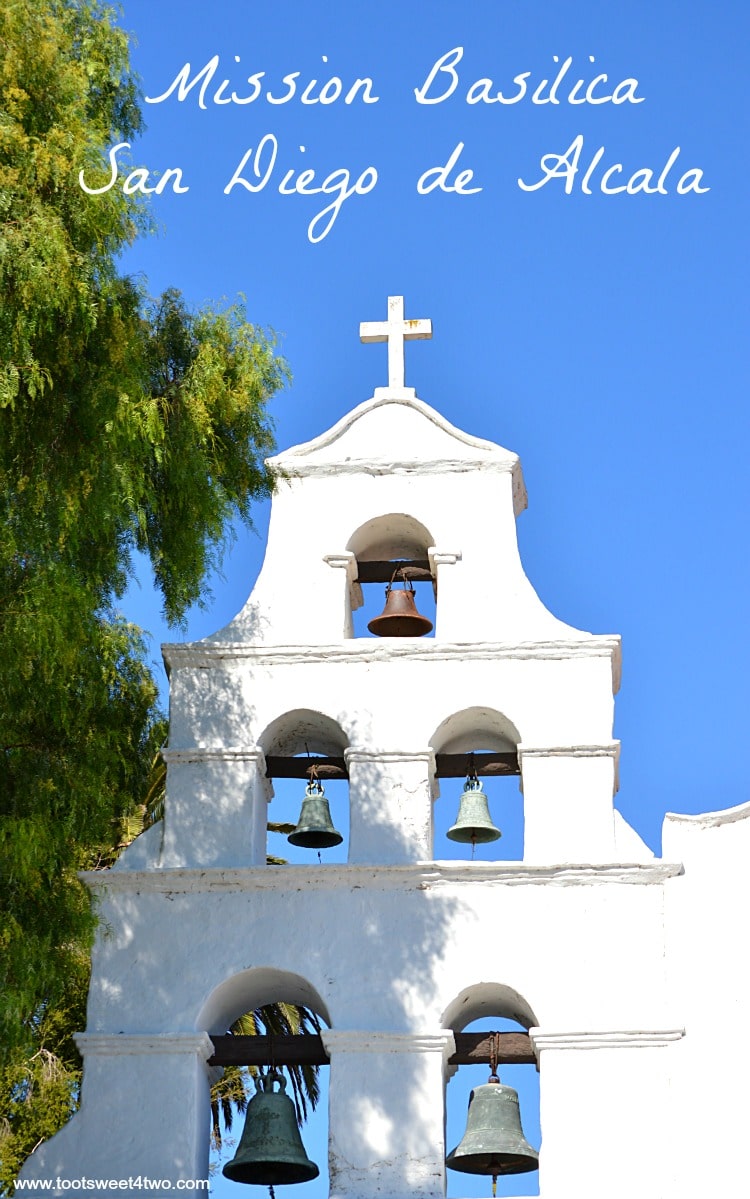
One of the things on my “bucket list” is to visit all 21 missions up the coast of California. I first visited Mission Basilica San Diego de Alcala (aka Mission San Diego de Alcala) in the mid-’70’s, when I moved to San Diego. During that first visit, I learned about the California Mission system – because while born in California, I was not raised in California, but rather was raised in the South and learning about California’s history wasn’t something we covered in school.
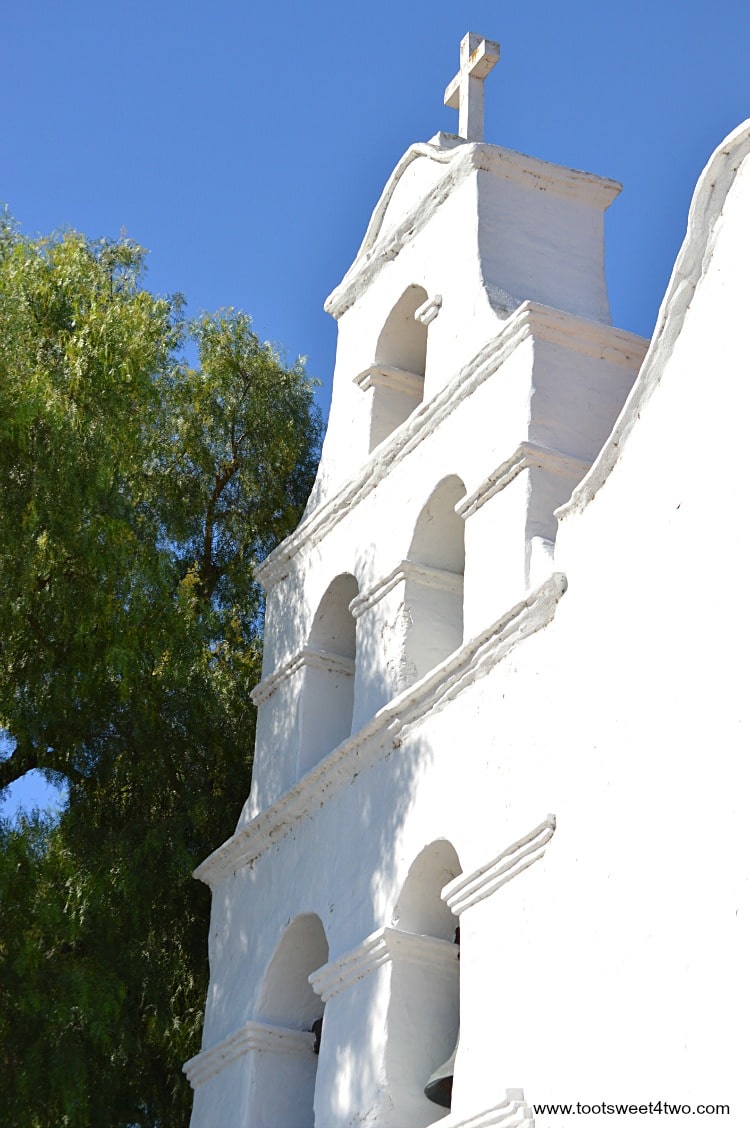
In those earlier years, learning that Mission Basilica San Diego de Alcala was the first mission built in the California mission system, piqued my curiosity about the rest of the California missions. And while years have passed and I’ve yet to see them all, I’ve visited this one many, many times.
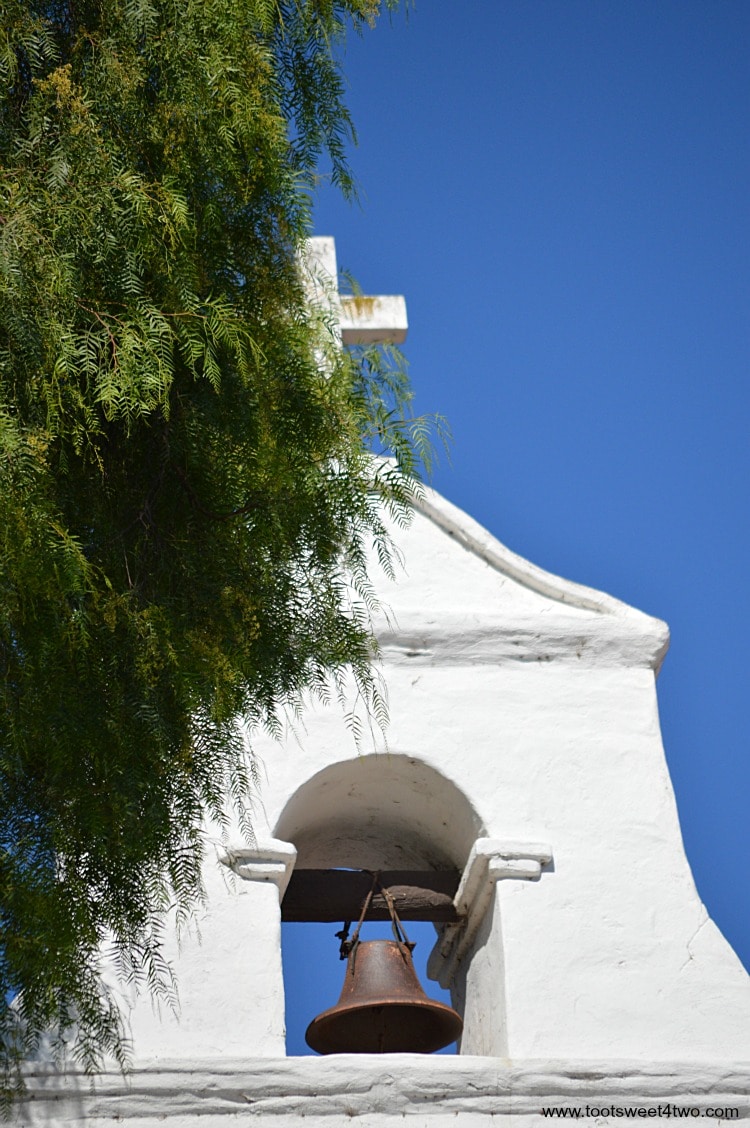
The first California mission in the California Mission System, Mission Basilica San Diego de Alcala was built in 1769 under the leadership of Friar Junipero Serra, a Catholic priest of the Franciscan order. All-in-all, Fr. Serra founded 9 of the 21 California missions before passing away at the age of 70.
Canonized as a Saint by Pope Francis on September 23rd of this year (2015), today Saint Serra is a controversial figure blamed for the enslavement of the native Indian population into forced labor camps in support of the mission system and the suppression of the native Indian culture during this secularization period in California’s history.
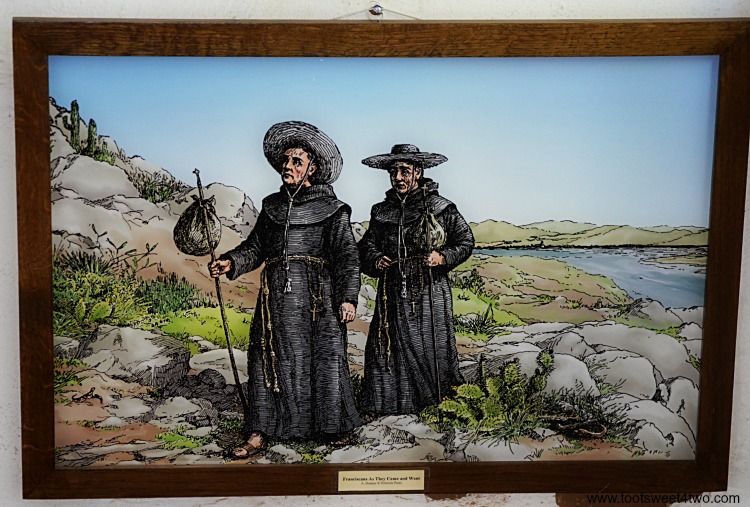
However his influence is viewed, there is no doubt that Saint Serra played an integral and substantive role in the founding of California.
On a recent “ho-hum” day in San Diego (what we natives call days of endless blue skies), Charlie and I revisited Mission Basilica San Diego de Alcala. On the day we were there, a wedding was taking place, so we were thoughtful and mindful of our intrusion, but I was able to take some beautiful pictures anyway (trying to not infringe on the guests and other visitors by not including them in these photos!). Here’s a collection of photos from the day:
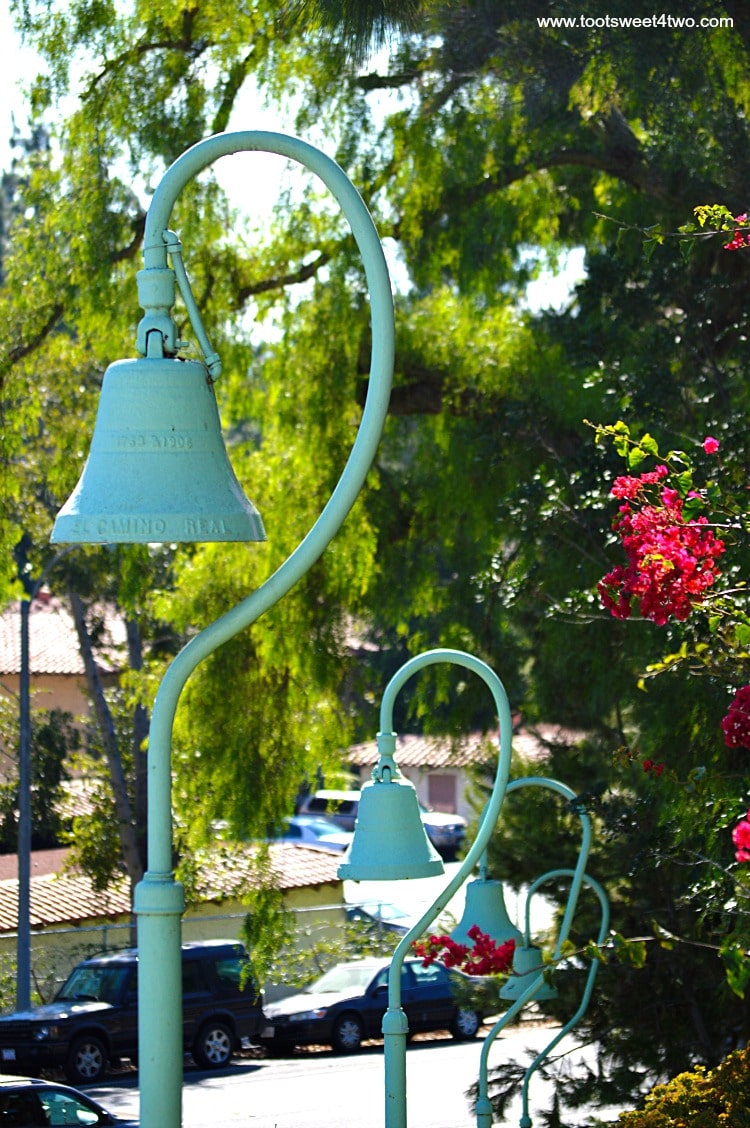
El Camino Real bells marking the beginning of El Camino Real aka The Royal Road aka The King’s Highway, the 600-mile road connecting the 21 missions and many sub-missions, presidios and pueblos between Mission Basilica San Diego de Alcala in Southern California and Mission San Francisco Solana in Sonoma in Northern California.
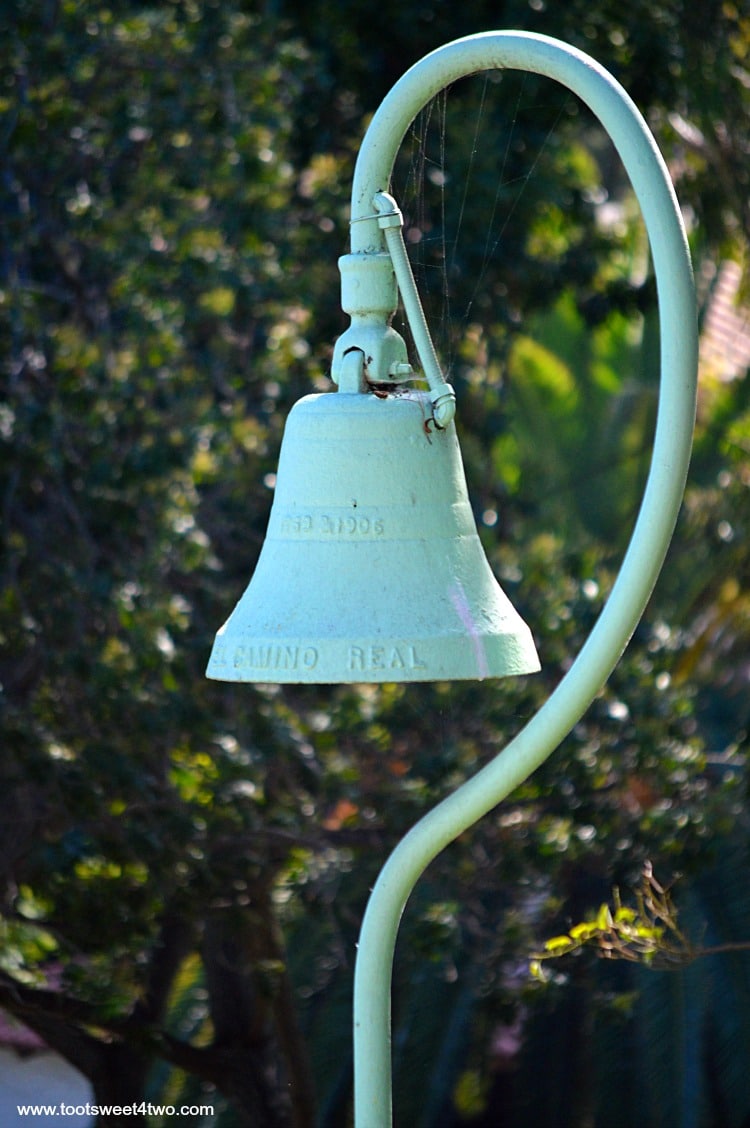
Close-up of one of the El Camino Real bells at Mission Basilica San Diego de Alcala.
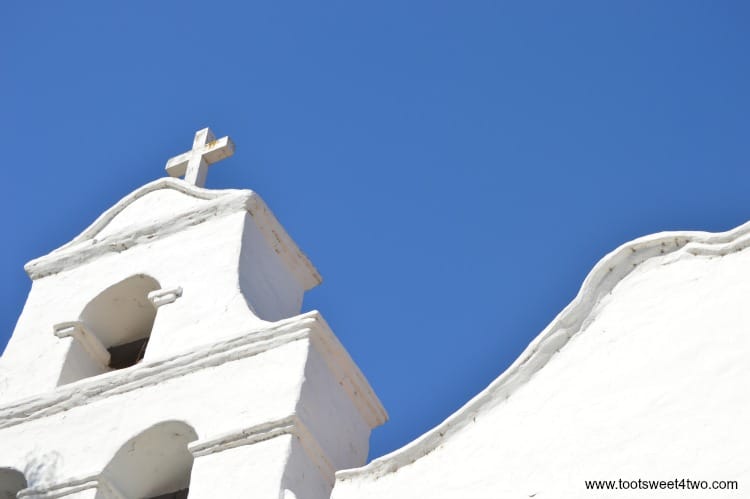
Looking up at the front of the bell tower at Mission Basilica San Diego de Alcala.
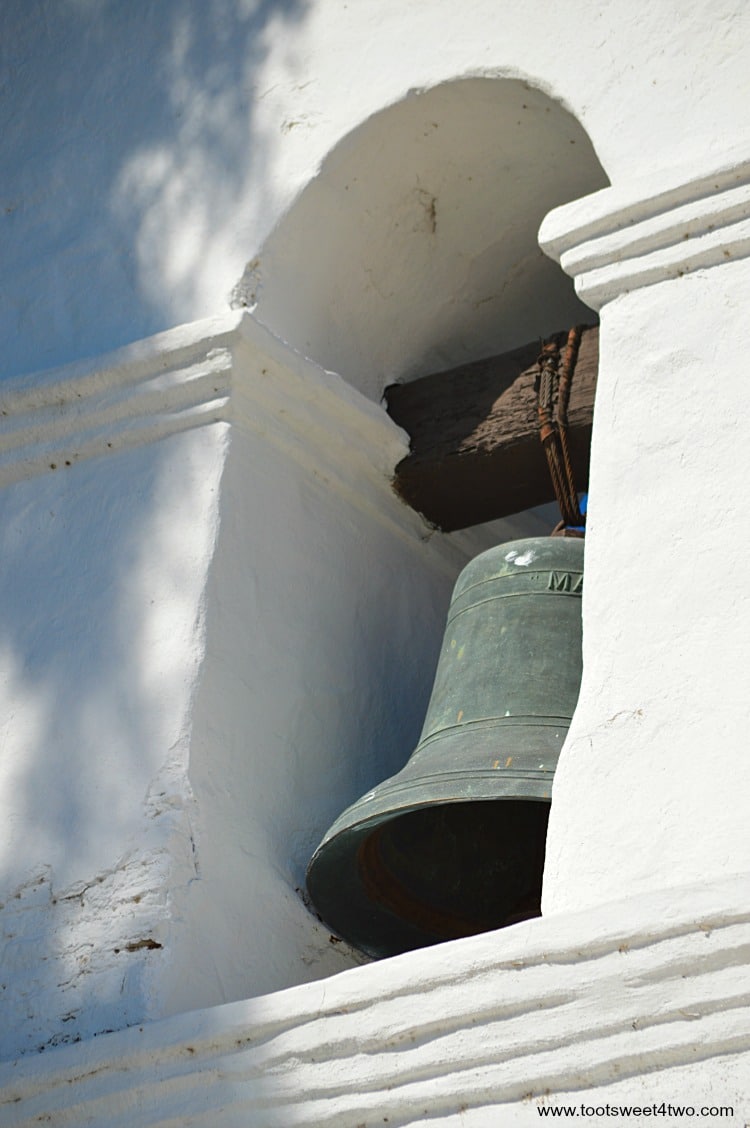
Close-up of bell in the bell tower.
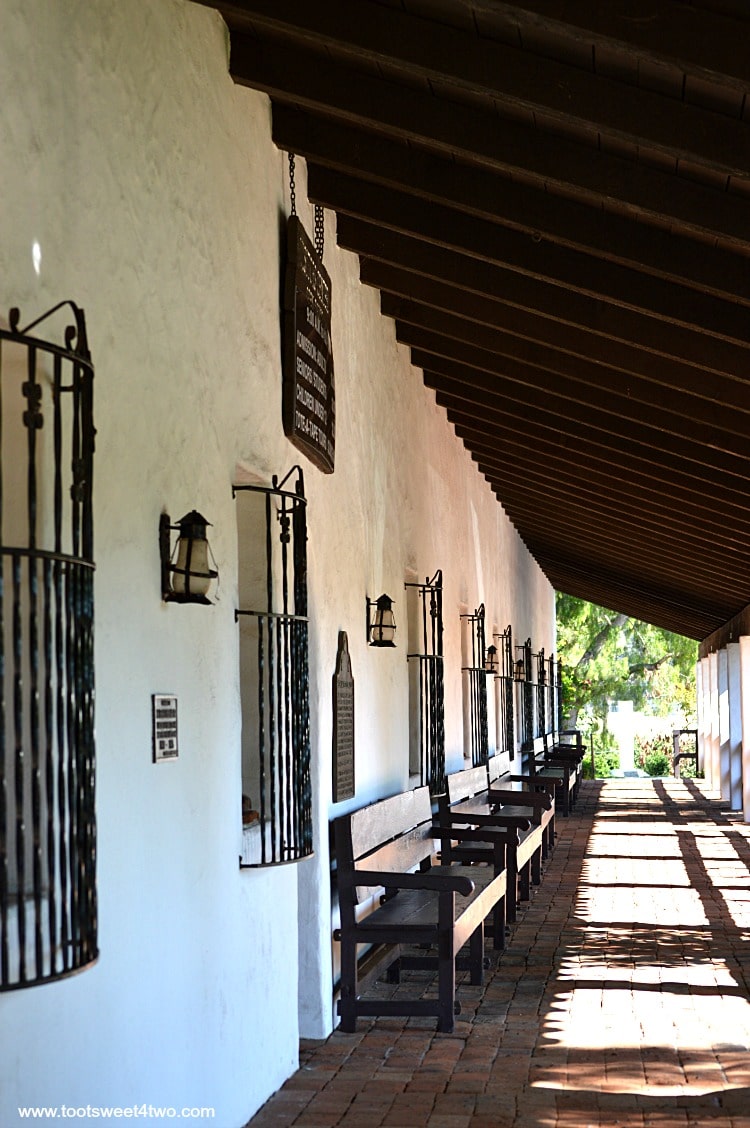
Front portico and walkway.
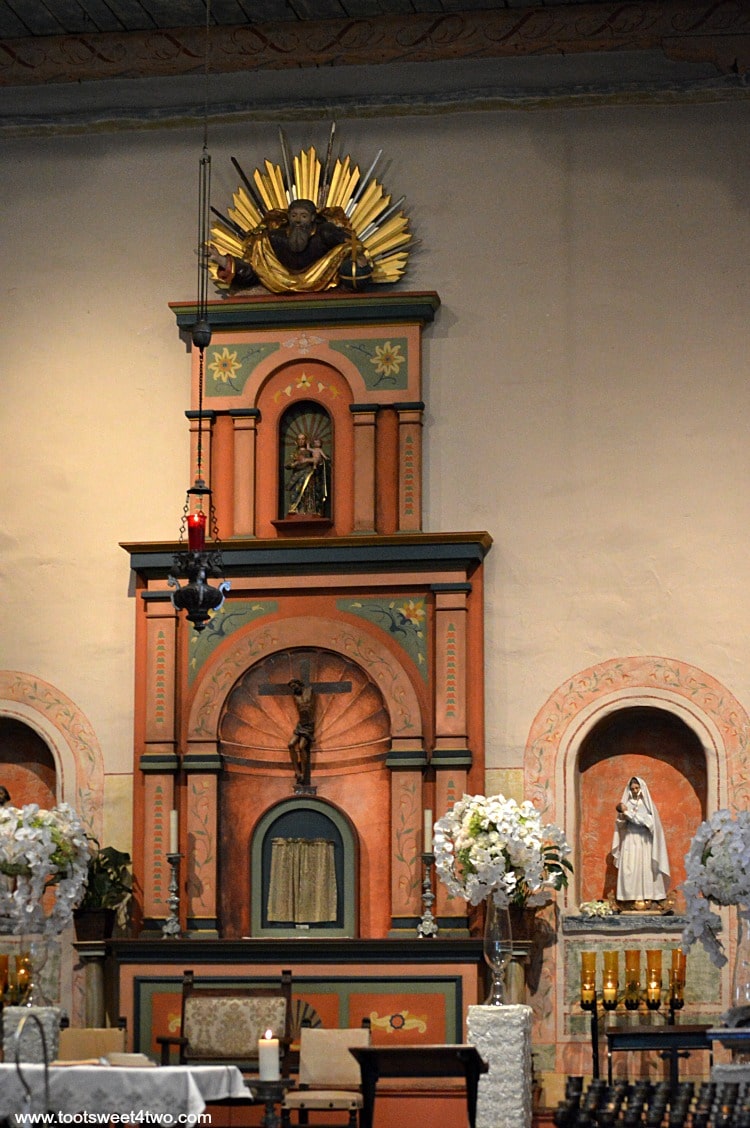
Interior altar (taken up close so as not to show the guests and visitors lingering in the pews after the wedding ceremony).
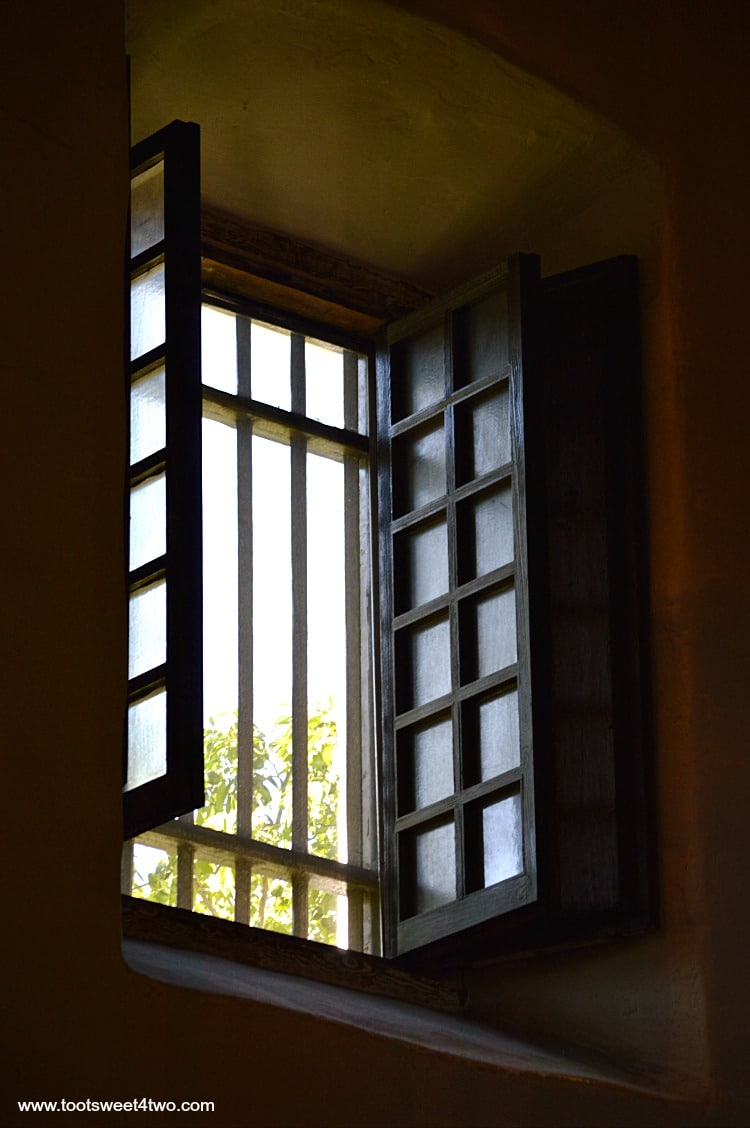
Interior chapel window at Mission Basilica San Diego de Alcala.
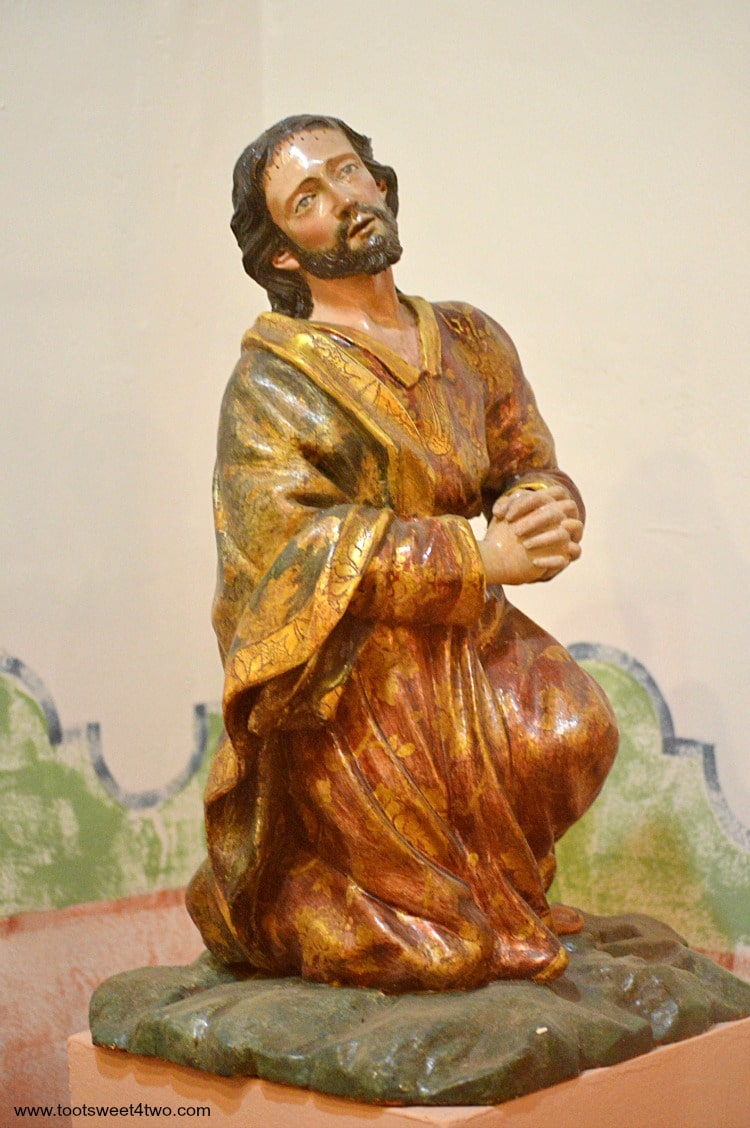
Statue of Jesus inside the chapel.
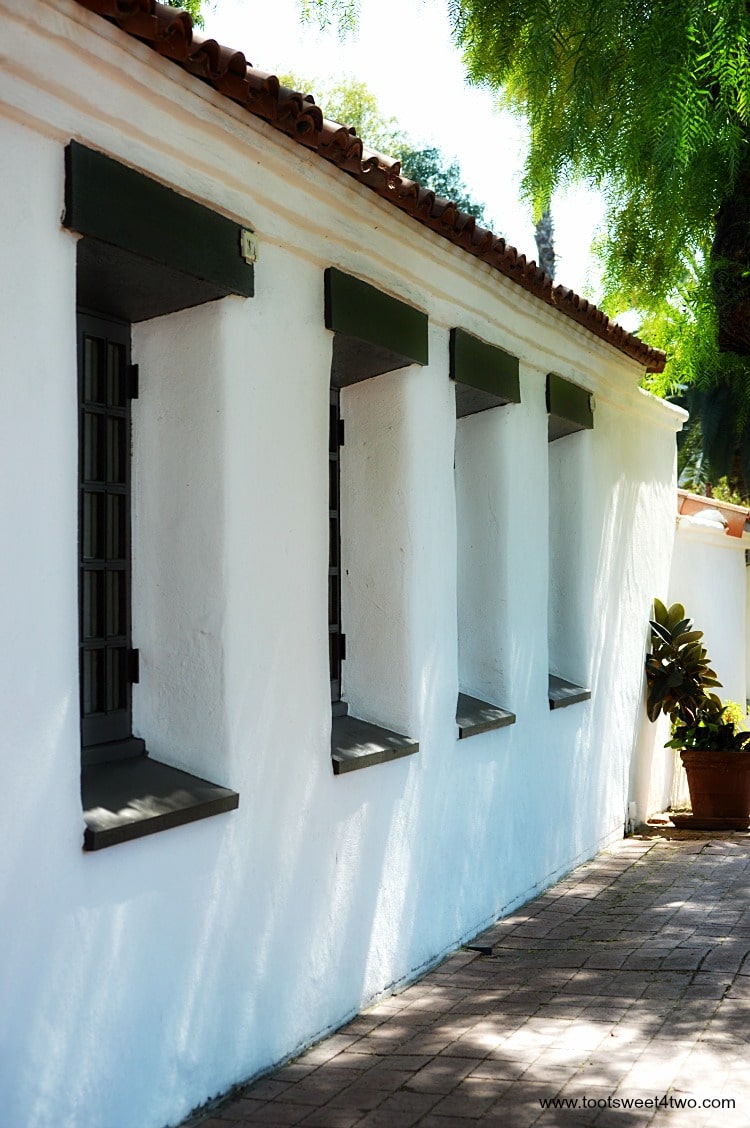
Walkway in interior courtyard.
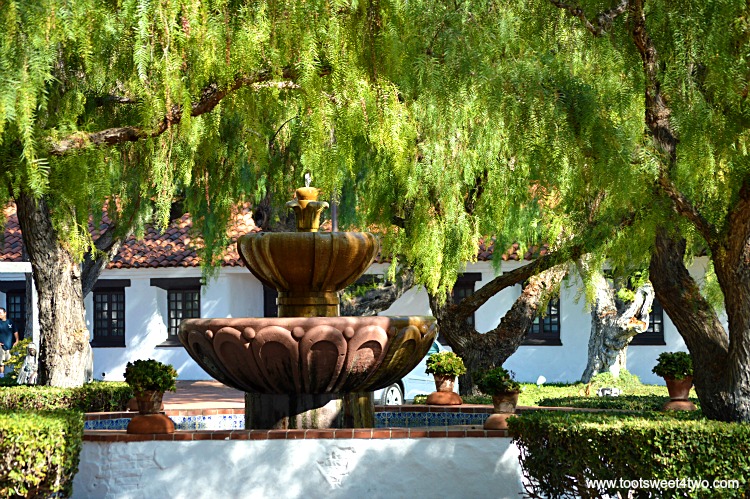
Fountain in interior courtyard.
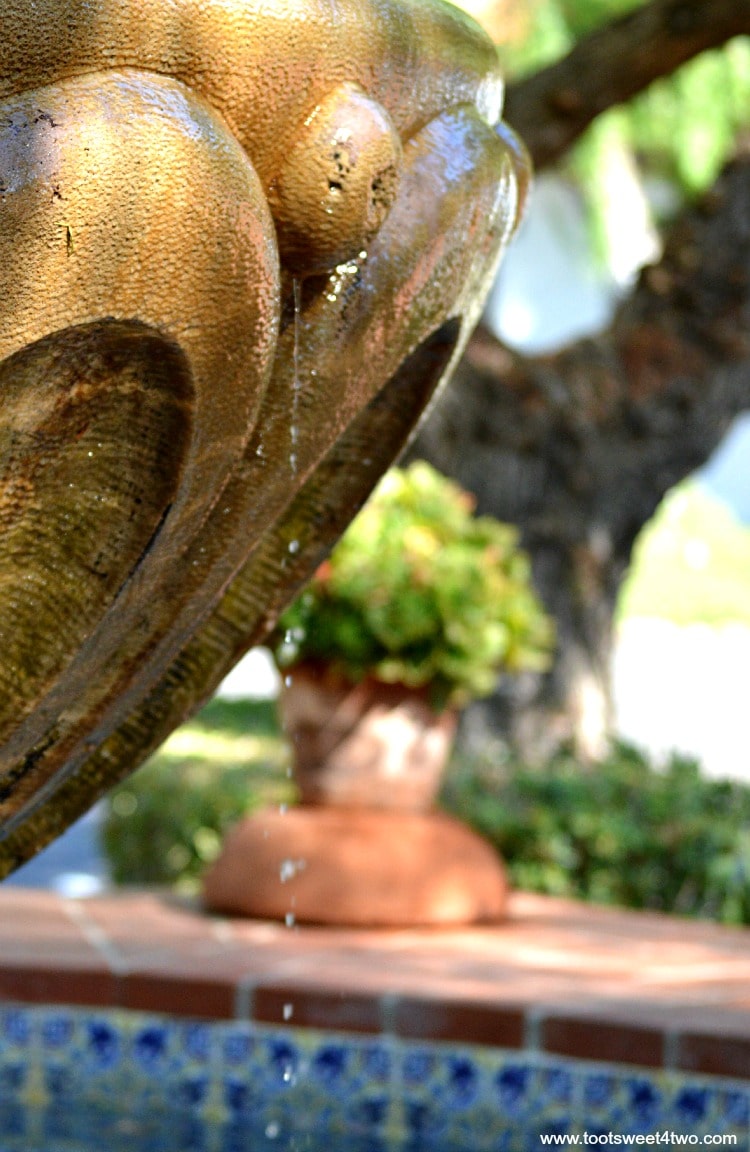
Close-up of interior fountain at Mission Basilica San Diego de Alcala.
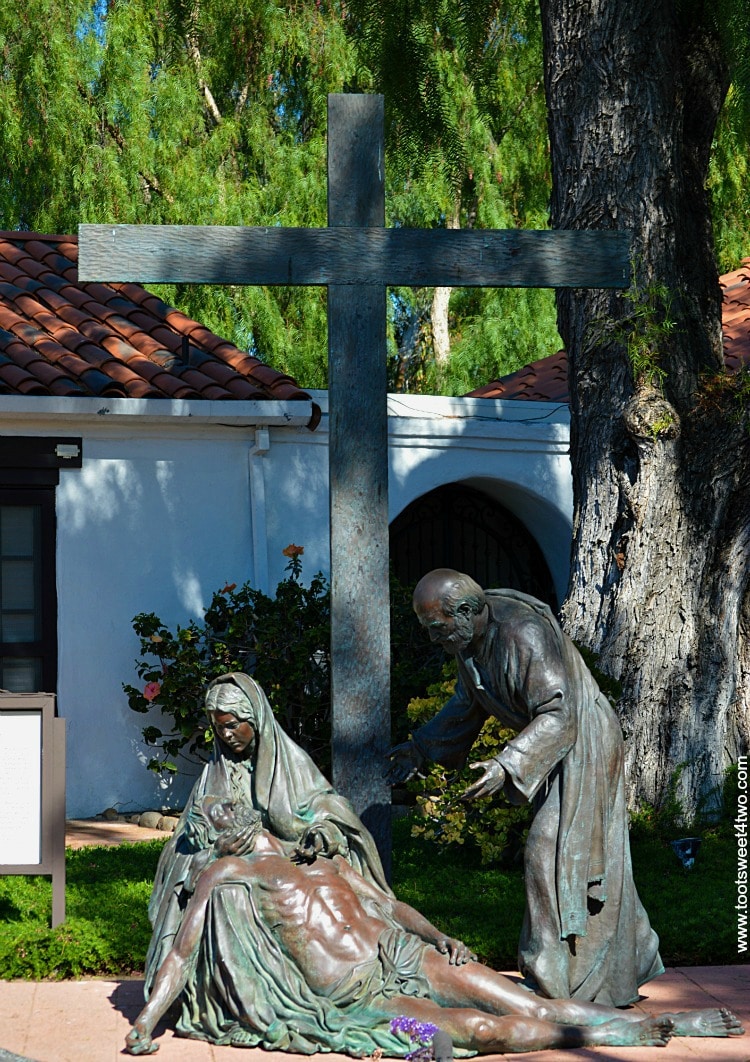
The Pieta, a life-size sculpture in the interior courtyard of Mission Basilica San Diego de Alcala.
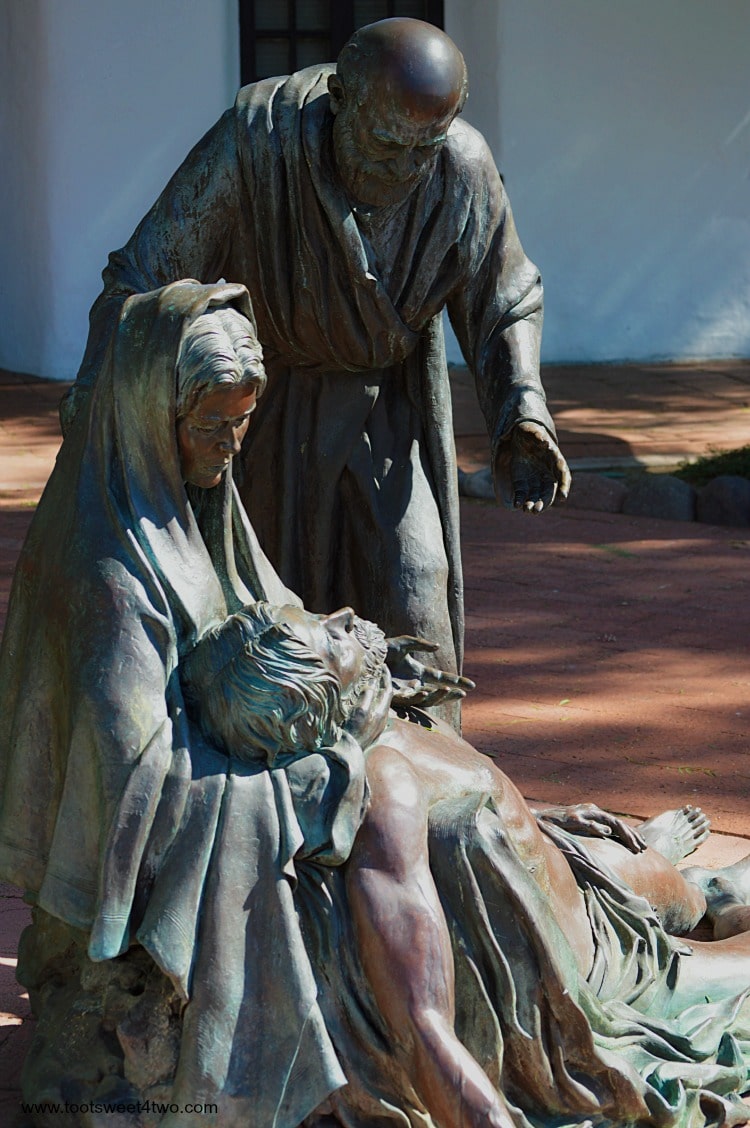
Close-up of The Pieta.
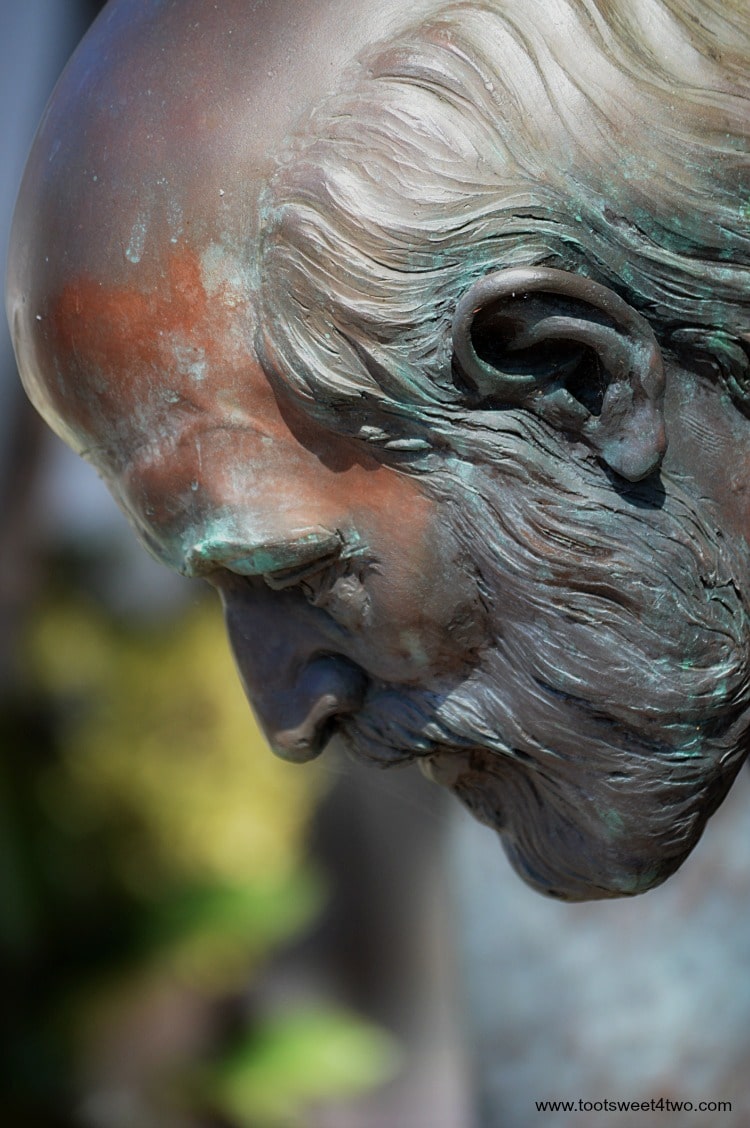
Close-up of Joseph’s face in The Pieta.
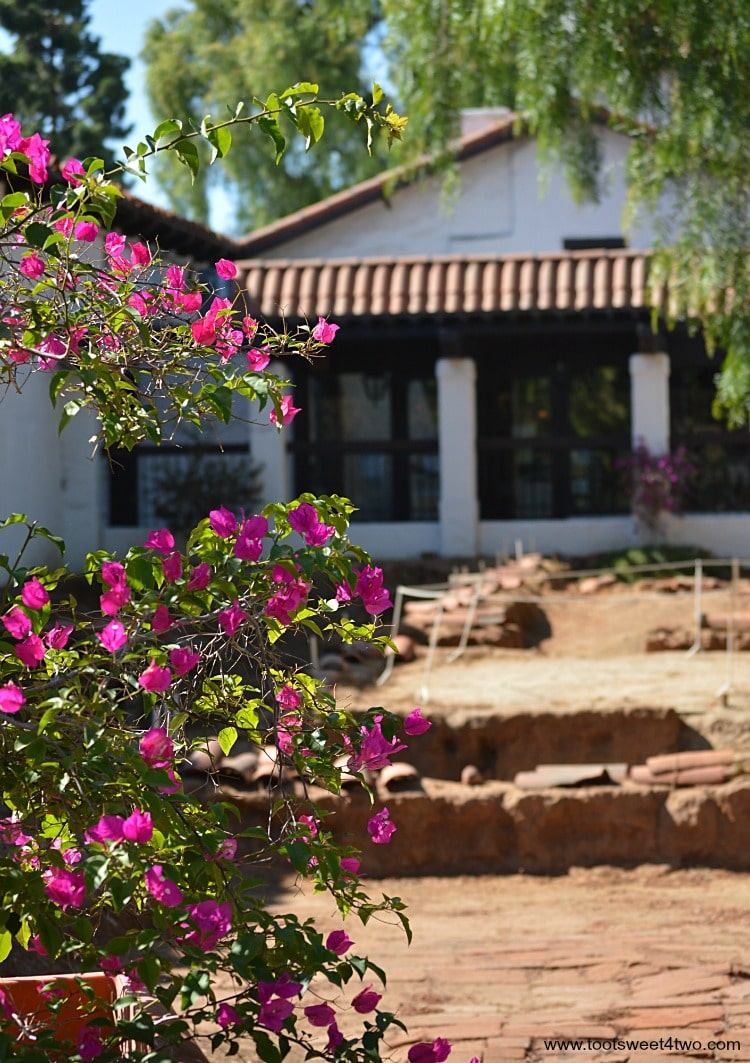
Archaeological dig in courtyard at Mission Basilica San Diego de Alcala.
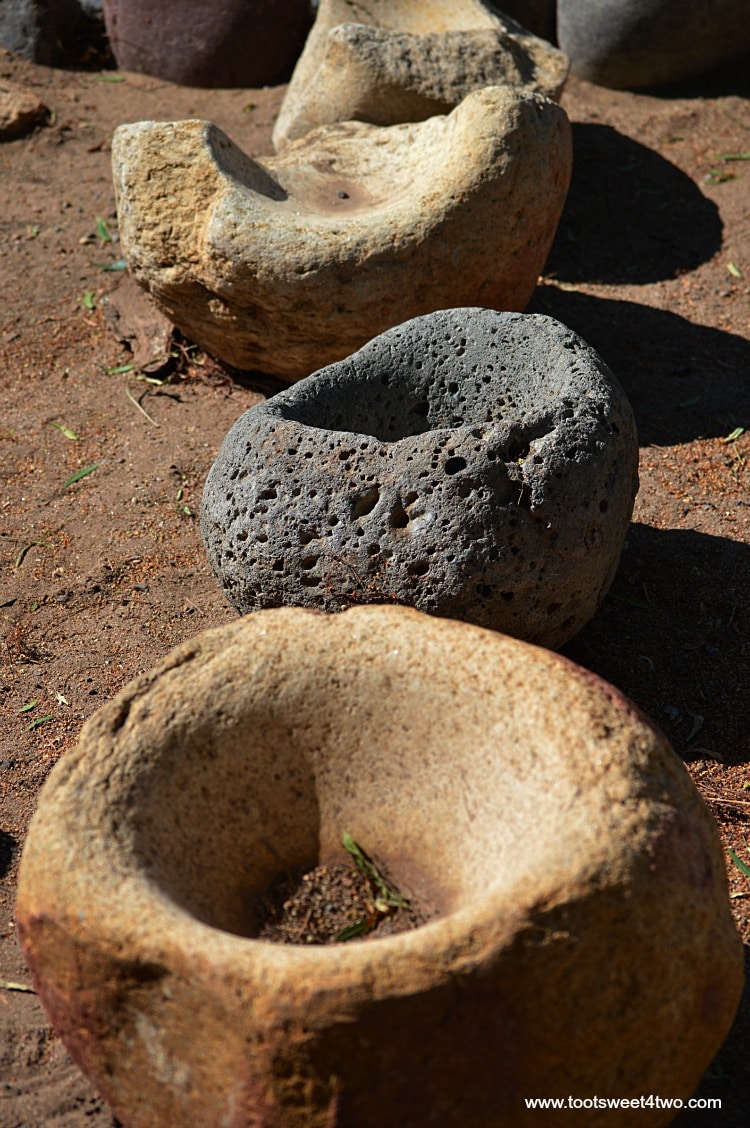
Metates (mealing stones for grinding grain and seeds) on display.
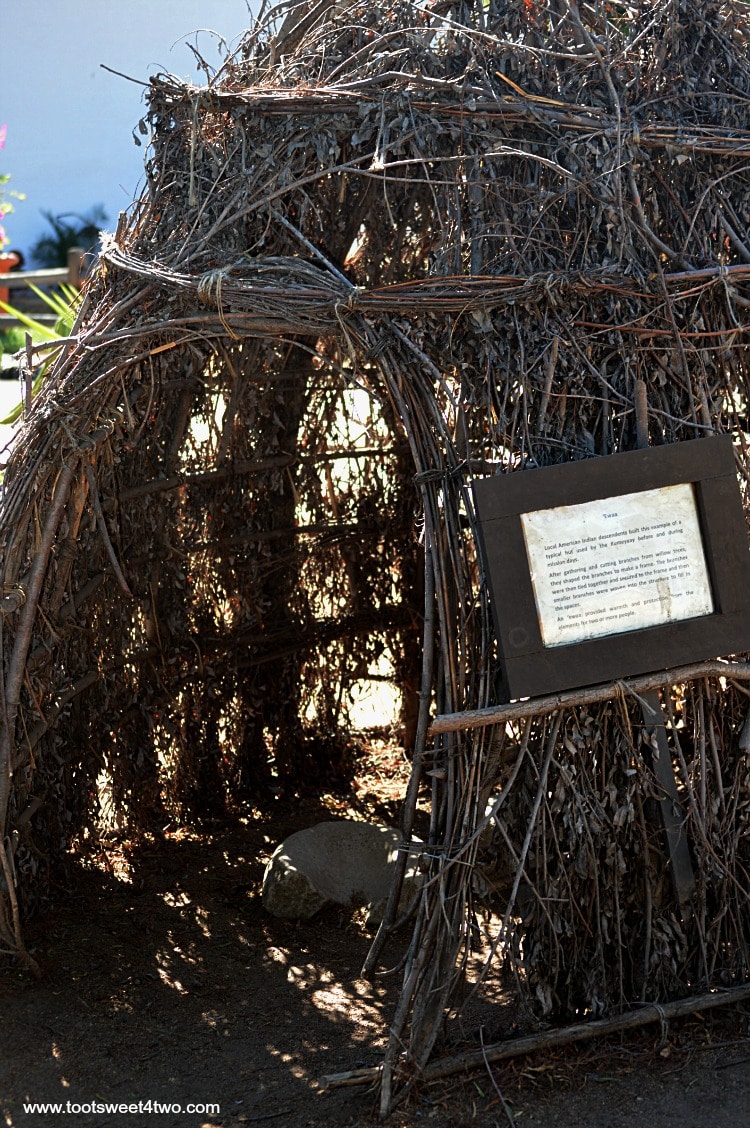
Example of an Ewaa hut.
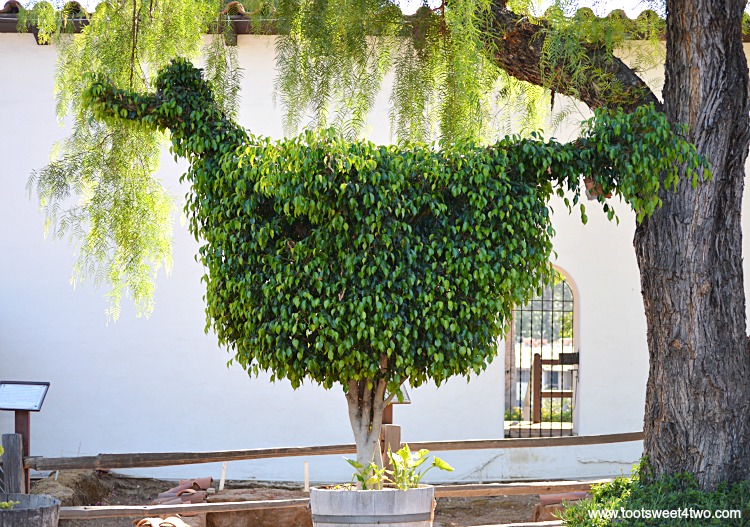
Dodo bird topiary in courtyard near archaeological site – the landscape gardeners at the Mission have a wry sense of humor!
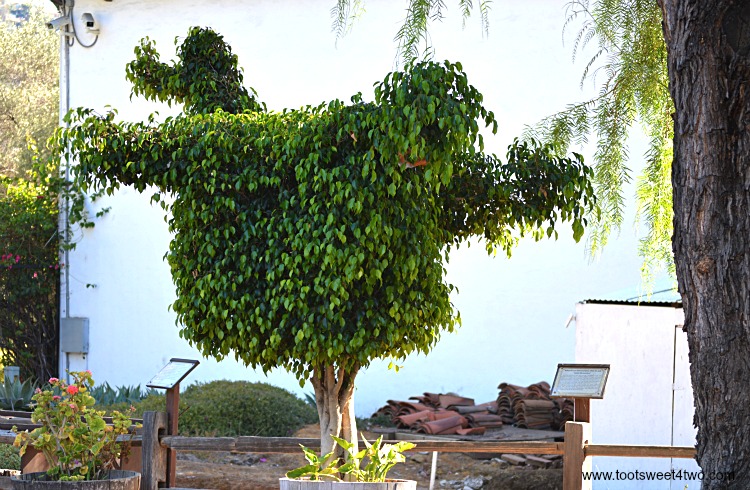
Back side of Dodo bird, just in case you had any doubt!
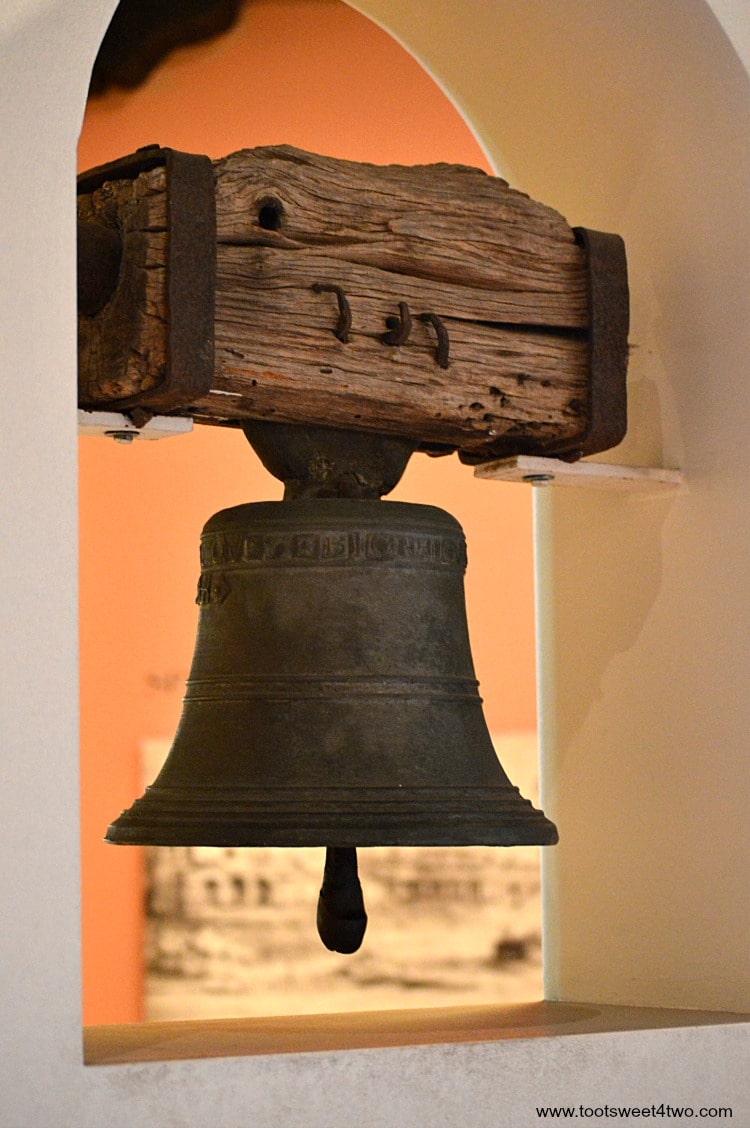
Mission Bell on display inside the museum at Mission Basilica San Diego de Alcala.
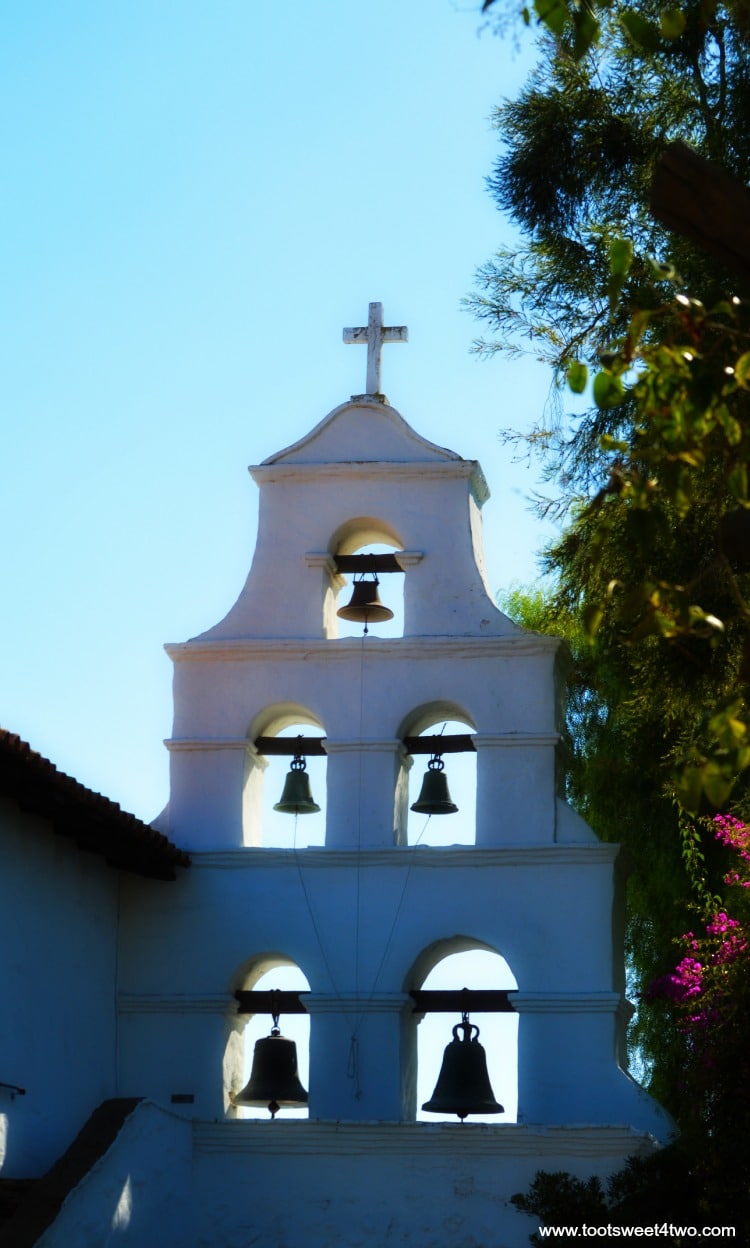
Back side of bell tower from interior courtyard.
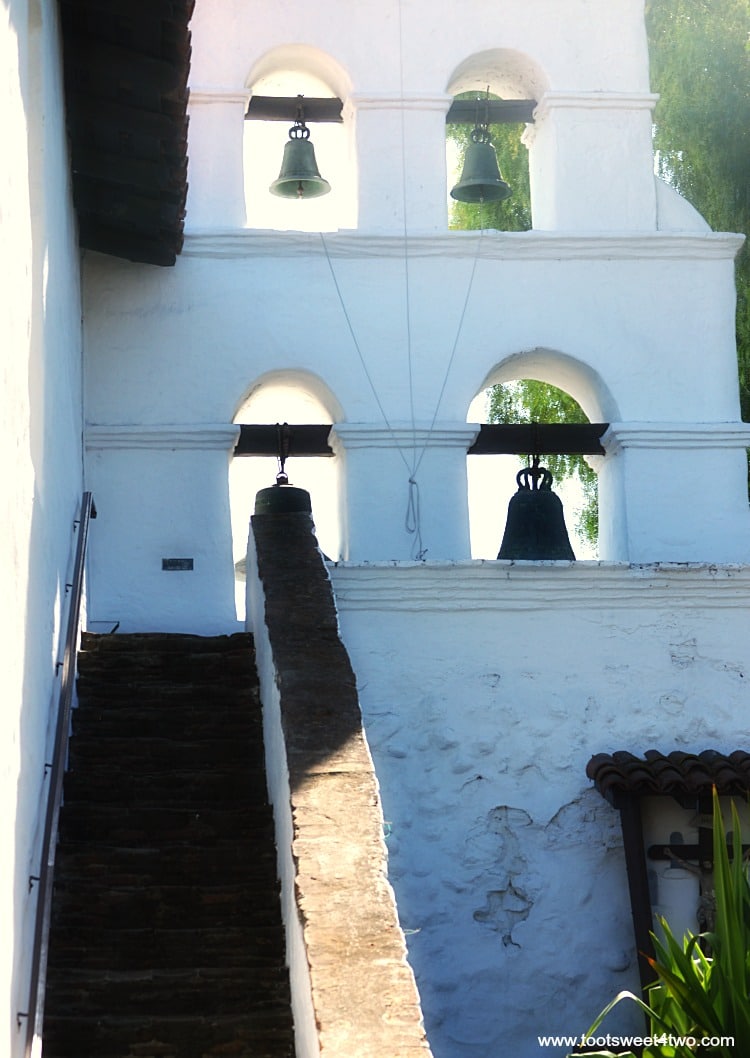
Stairway leading to bell tower.
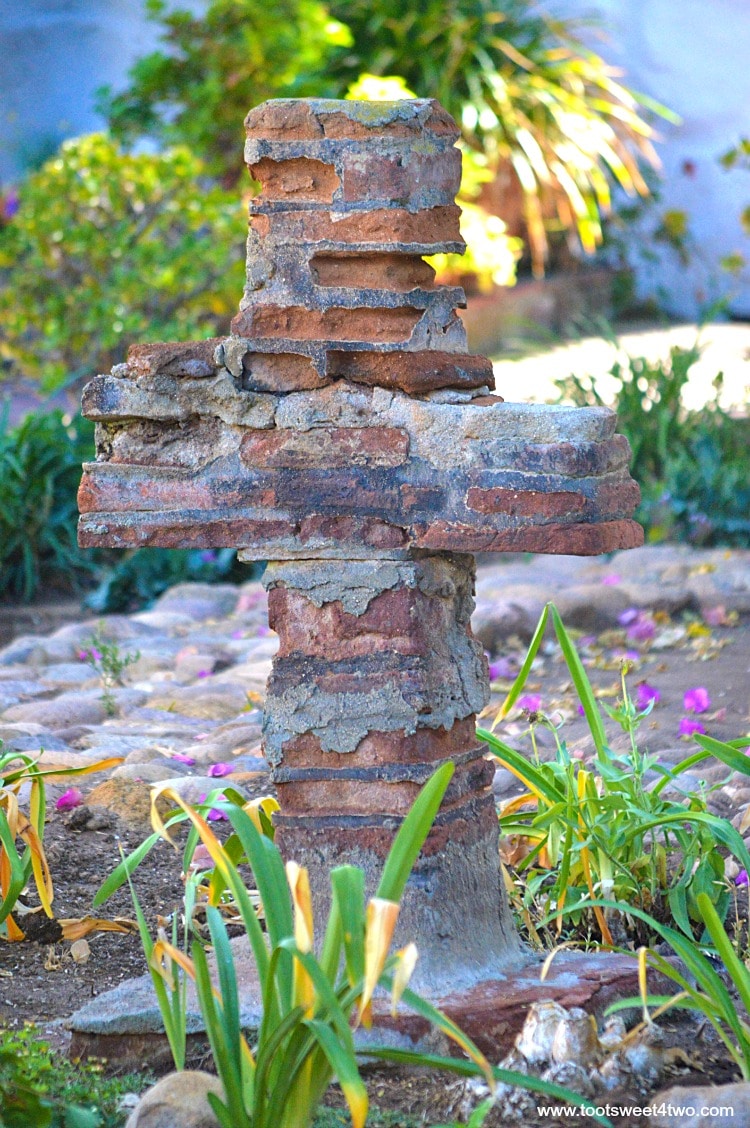
Old cross – grave marker at Mission Basilica San Diego de Alcala.
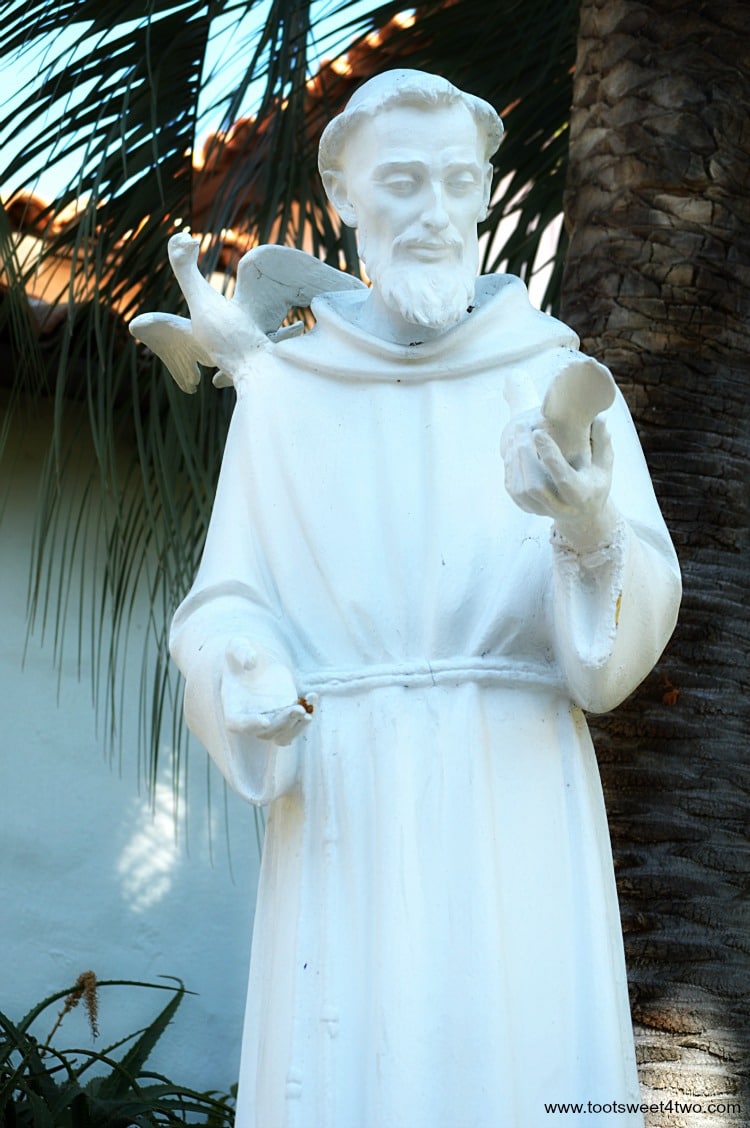
Statue of St. Francis of Assisi, the founder of the Franciscan Order, in the interior gardens at Mission Basilica San Diego de Alcala.
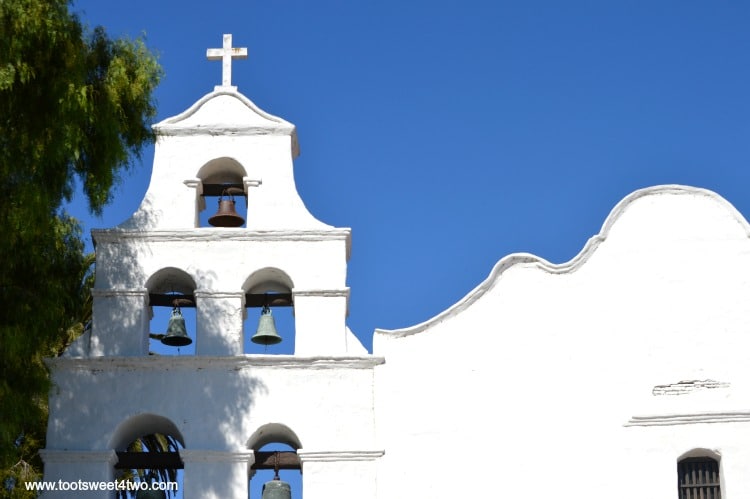
One last look at the front of the Mission.
Here are links to other posts about the California’s history:
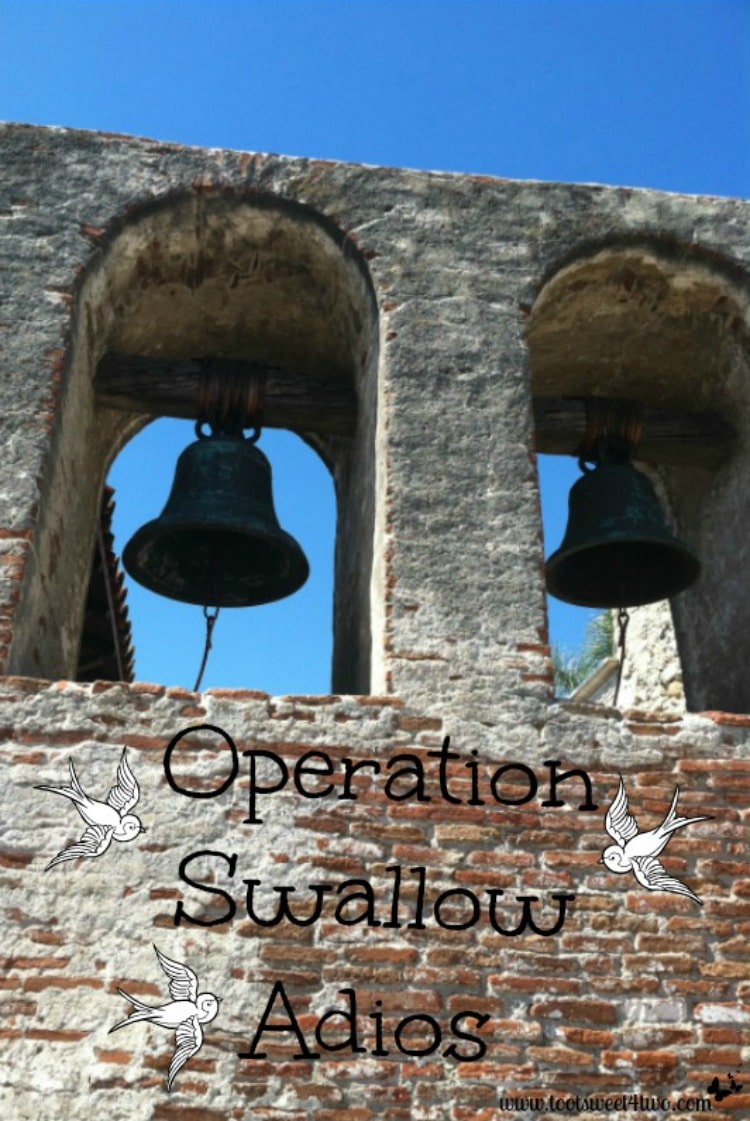
Operation Swallow Adios (Mission San Juan Capistrano)
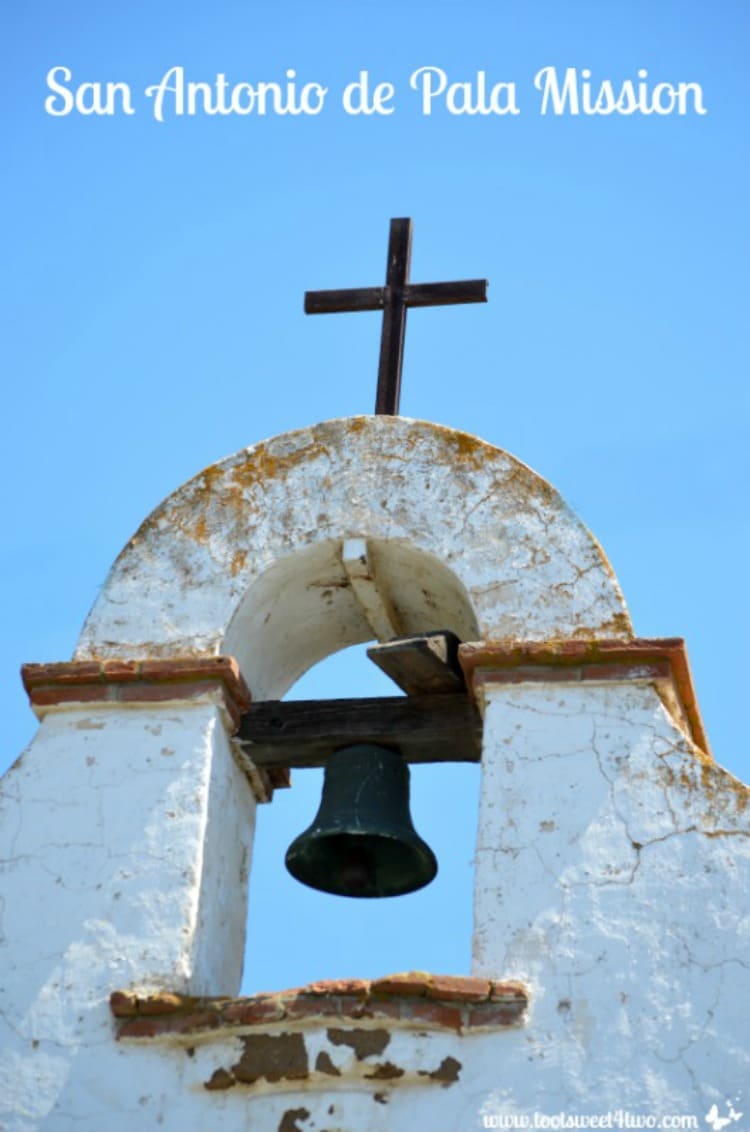
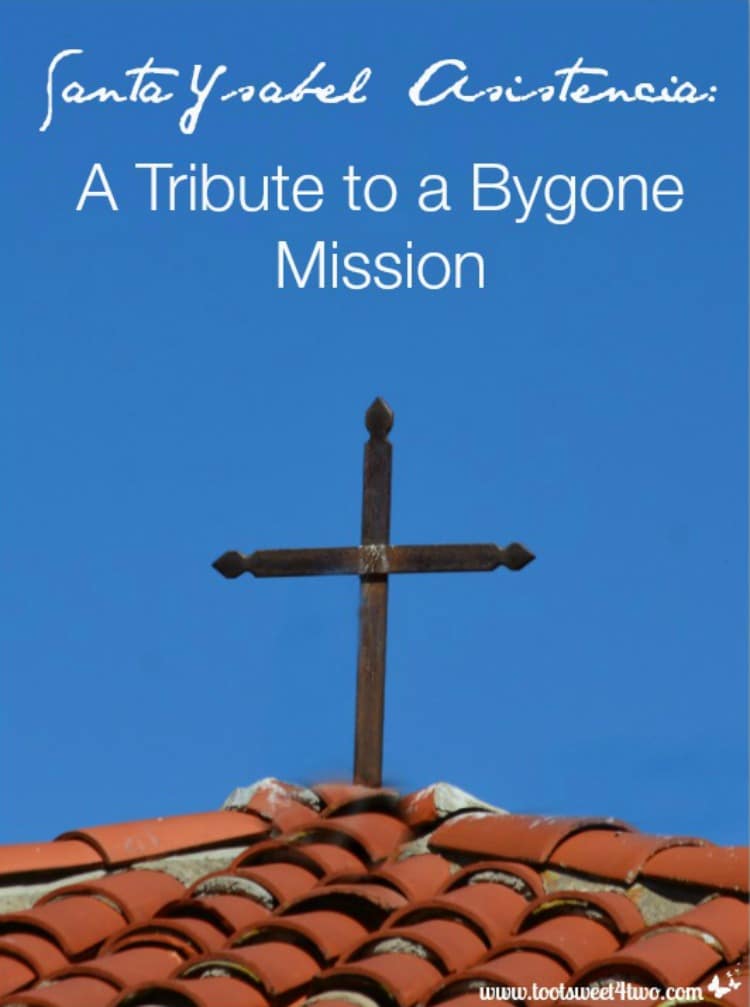
Santa Ysabel Asistencia: A Tribute to a Bygone Mission
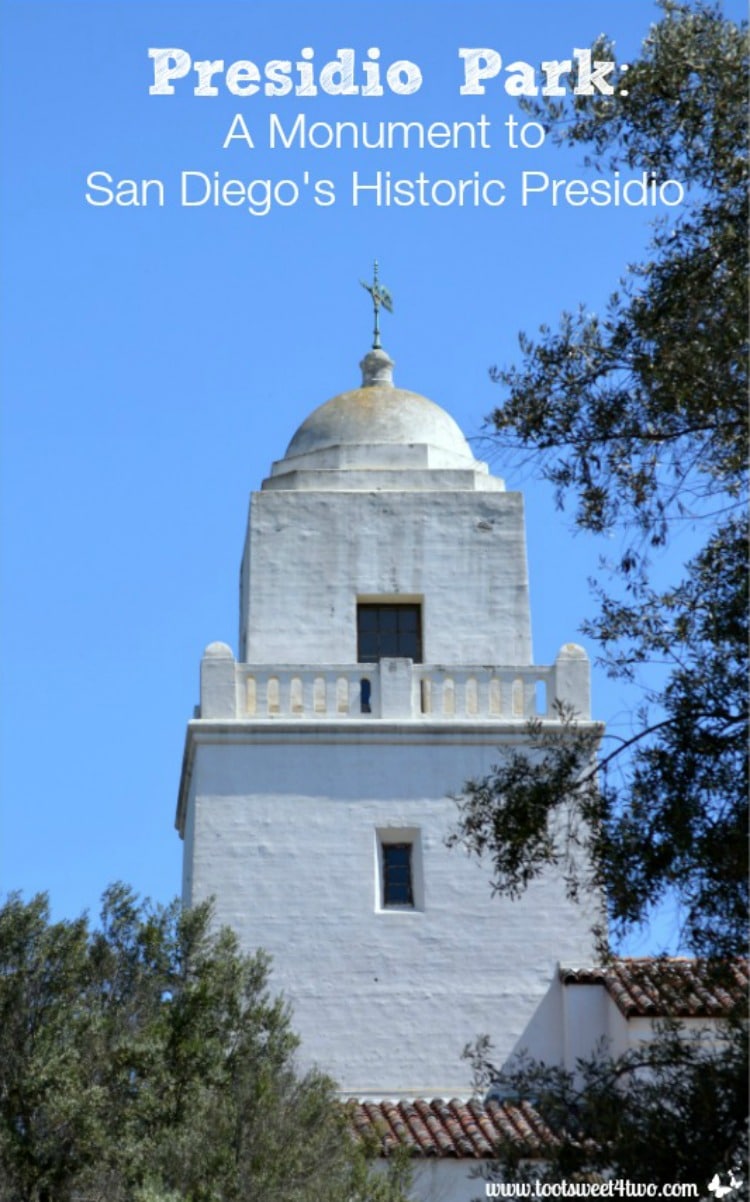
Presidio Park: A Monument to San Diego’s Historic Presidio
Tootles,

Leave a Reply